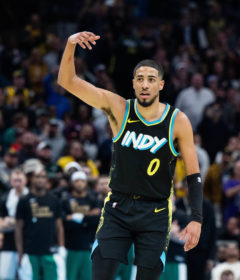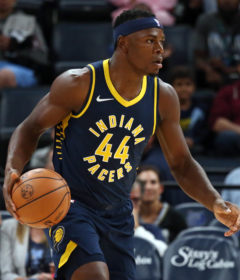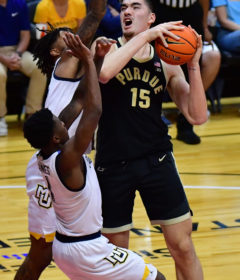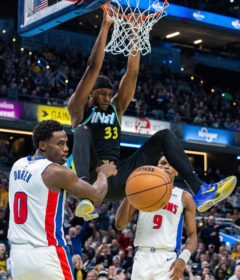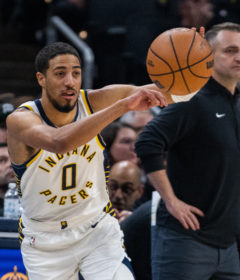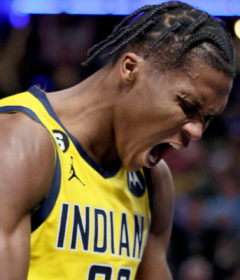Butler success is proving ascendancy to higher class
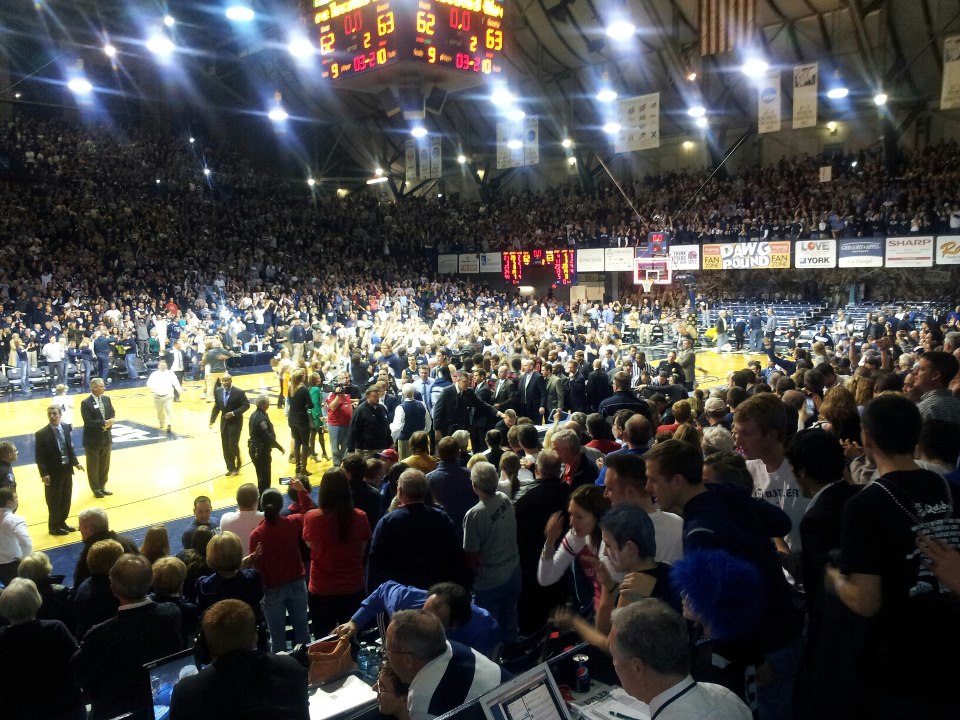
By CHRIS GOFF
ISL Correspondent
The Butler Bulldogs are putting together one of the most impressive resumes in the country, and perhaps it’s time we stopped acting surprised. What’s scary about Saturday night’s victory over Gonzaga is that it had all the marks of a program’s maturation.
Butler came into the season expecting to challenge VCU and St. Joe’s for Atlantic 10 supremacy, much as it did Valparaiso and Cleveland State in the Horizon League a year ago.
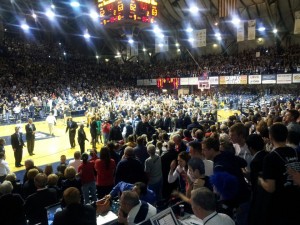
The conventional wisdom is that for a smaller conference bigwig to beat truly marquee teams, you need to find a few breaks. And certainly, Butler has had moments of good fortune over the years – from the unavailability of Syracuse center Arinze Onuaku in the 2010 West Regional semifinal, to the infamous 0.8 foul by Pittsburgh’s Nasir Robinson.
Yet what stands out most about the Bulldogs’ latest mighty takedown is how many things didn’t go right for them, even during a dreamy victory.
Remember old friend Rotnei Clarke, who was the human remedy to Butler’s inability to score? He never took a dribble, leaving Butler’s offense undeniably weakened.
Remember how free-throw shooting was supposed to no longer be a defining issue? Butler had gotten to the line a ton last season but was so scattershot on the uncontested looks that it shot a ghastly 64.9 percent. Led by foul shot prodigy Kellen Dunham, this year’s Bulldogs entered Saturday hitting a more reasonable 70 percent. Against Gonzaga, Butler shot 12-for-23 on free throws, including eight doinks in the final 12:07, and won anyway.
Remember when we marveled over wholly refined defensive performances? Mistakes left Butler run-of-the-mill in Saturday’s win. Khyle Marshall totally lost sight of his man, Sam Dower, who slipped to the rim for a free layup. Chase Stigall, instead of closing hard on the shooter Dower in the corner, looked for a pass, even though Dower was wide open and had already made four jumpers. Erik Fromm, head turned, was surprised on a backdoor cut by Elias Harris. Worst of all, Dunham, responsible for rotating down on Kelly Olynyk, left the pass-blocking space right in front of Olynyk to inexplicably head toward the arc — right before a pass zoomed toward the now-open center. Olynyk’s resulting free throws could easily have been the winning points with 4.6 seconds remaining. Gonzaga shot 47 percent from the field.
All of that happened, but the Bulldogs won anyway. And on balance, they looked pretty good doing it.
“It felt like a high-level tournament game,” Gonzaga coach Mark Few said.
So maybe we need to start a new premise: Butler is a national heavyweight.
Not a program coaches flee for other college jobs.
Not a school that overachieves and pulls off a long tournament run once every five years.
But a legitimate, perennially successful team that dances on or around Top-25 ballots in perpetuity.
The 64-63 win over Few’s ‘Zags, courtesy of a miraculous steal and jumper by Roosevelt Jones, is neither Butler’s first rodeo nor fodder for the mentally lazy gritty-upset view that sees the outcome as some form of long-shot outlier.
Instead, this begs much deeper themes.
It was obvious Butler matched up great with Gonzaga — a member of the country’s elite, with 14 consecutive trips to the NCAA tournament, loads of talent and regular contention for high seeds.
Butler is on a consistent tear against similar competition, and nobody seems to string all the results together.
Care to take a stab at the Bulldogs’ record in their last 16 games against ranked opponents?
Try 11-5.
Stare in amazement if you please. But that’s Butler’s record in a stretch in which 11 of those 16 opponents were in the top 10.
So victories like the most recent one aren’t out of the ordinary. They are becoming commonplace.
The Bulldogs are on a similar trajectory as Gonzaga, which vaulted from a Cinderella regional final run in 1999 to status as a steady national power.
Butler is so good that coach Brad Stevens, ever humble, resorts to downplaying the special growth taking place before our very eyes.
“I don’t know if we’re different than other programs in how we go about things or our development,” Stevens said. “We’re fortunate to have a foundation of values established long before I got here. All of us that have had a chance to move into this seat embrace that and embrace truly that the foundation gives you a chance for success if you have the right guys on the bus. More often than not our players have been the right guys to drive the bus.”
But those players aren’t the type of NBA-track stars who appeal to casual fans or drive TV discussion, so Butler’s drift to the upper echelon of the sport stays quiet.
Once again on Saturday, just as in the victory over then-No. 1 Indiana in December, the catalyst was Jones, a 6-foot-4, aw-shucks forward built more like a fullback who has 2,869 followers on Twitter — or exactly 69,309 fewer than hyped Kentucky freshman Nerlens Noel.
Regardless, the Gonzaga game provided an important lesson: However quaint, old or small Hinkle Fieldhouse may be, the team that plays inside it is reaching dizzying heights as one of the premier contending programs in all of college basketball.
The Bulldogs now begin the arduous task of dealing with those outside expectations.
“It’s very fragile, the winning and losing part of things,” Stevens said. “What shouldn’t change is ever how your guys act, how they represent your school and everything else. At the end of the day, our guys have done just as good a job representing our school as they have playing basketball.”
If so, that campus is bathed in angelic light. Because the Bulldogs are playing basketball with the brightest teams in America.

